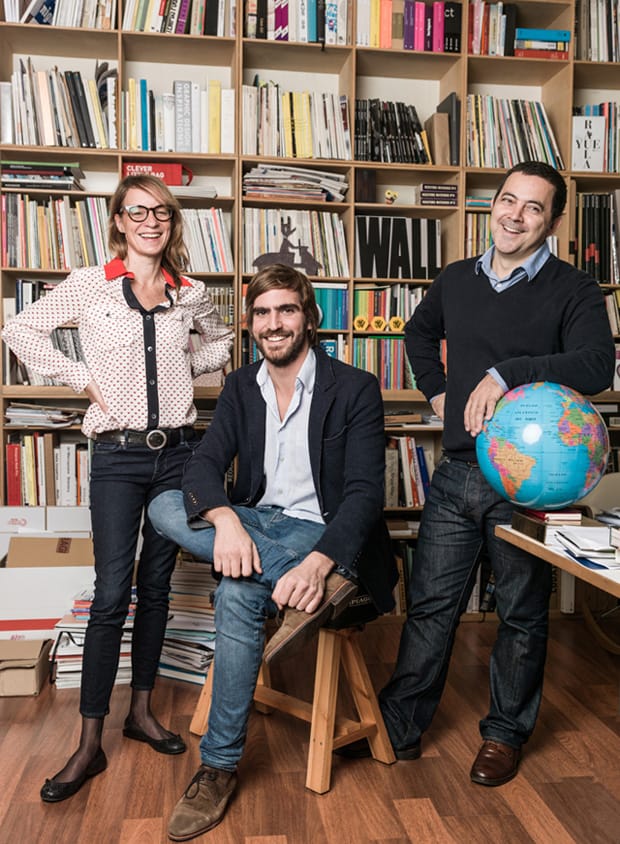Six years on from his first interview with Astrid Stavro, Robert Urquhart brings us the sequel. We hear from Stavro and partner Pablo Martin about moving to Mallorca, forming new studio Atlas and mixing love and work. We also find out what a panoply of fellow designers and commissioners make of the pair.
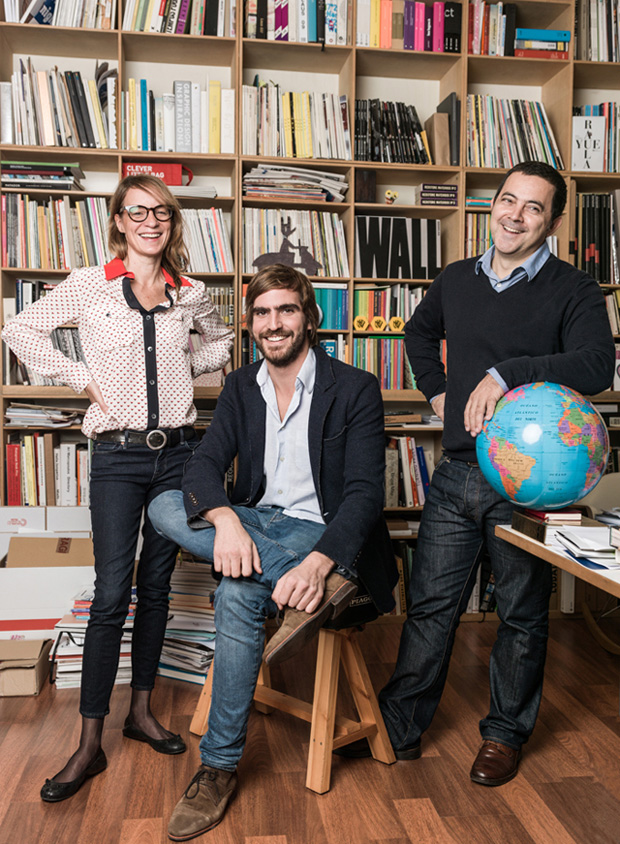
I last interviewed Astrid Stavro in 2009, in Barcelona. This time round I'm cheated out of a trip to her new studio and home in Mallorca, as both she and Pablo Martin (her partner in love, parenthood and now business), are in London for meetings. I'm to meet Astrid first, and then Pablo, who will join us in Soho.
Both Martin and Stavro have enjoyed highly successful international careers in their own right. The two seismic shocks since our last interview are, firstly, the move from the bustle of Barcelona to the relative peace of Palma and then, two years ago, the pairing of Martin's Grafica studio and Stavro's studio, to form Atlas. Two moves that for lesser mortals would be seen as emotional and economic suicide; to the relative back of beyond, and working with your spouse.
I have a strong character; I get pissed off, I scream a lot in the office, I guess it's my Italian blood. Pablo is the pacifier, Pablo is Buddha...
No one was more surprised by the move from Barcelona to Mallorca than Rafa Roses, now Senior Associate at Atlas. At the time, Roses was a senior designer working for Martin at Grafica in Barcelona. Born in Barcelona but raised in Mallorca, he harboured the natural assumption that if there was a move, it would be to a larger city. “Pablo told me he was moving the studio to Mallorca... Mallorca.” recalls Roses, “I’d never thought of going back to the island,” adding, somewhat thoughtfully, “there really isn't a design culture there.” Despite this, Roses followed Martin across the Balearic Sea and they set up a studio, sharing a space with Stavro.
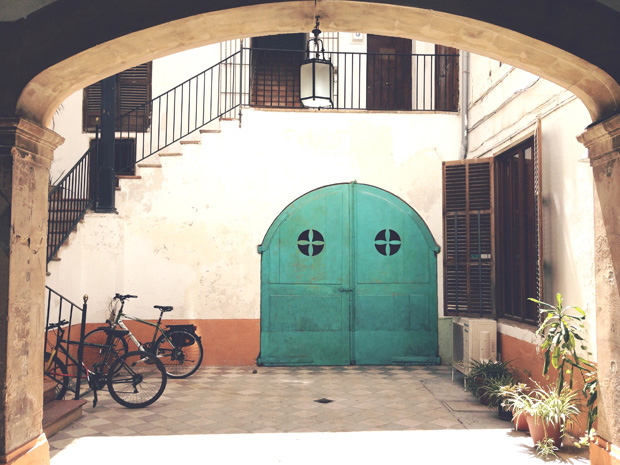
“When we first moved to Mallorca, Pablo had his thing and I had mine,” explains Stavro, “we thought as a married couple there is no way we are going to work together. We lived in the countryside with a rooster that wouldn't shut up, and then we moved to the big apple of Palma and we started sharing a studio…”.
“When we started sharing space with Astrid,” continues Roses, “we began collaborating on a wide range of projects, although there was a clear line between both studios. As time passed this line started to blur and even the clients seemed confused. ‘Who are we doing this project with, Grafica or Astrid Stavro Studio?’ The answer was both.”
The birth of Atlas was rather like an affair, and by mutual consent was soon made legitimate. “We are driven by love for each other and for our work,” proclaims Stavro, “when we first started Atlas I said to Pablo we should do the Sagmeister and Walsh thing advertising the new studio, but make it more John and Yoko; call the press to various hotel rooms and be in bed... I mean, how many married designer couples do you know?”
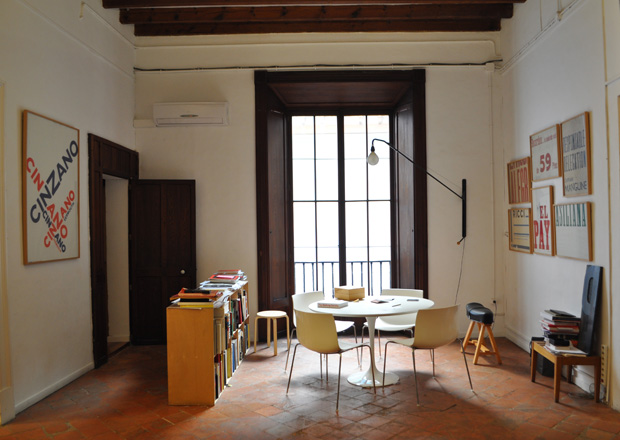
“Their relationship creates a very particular dynamic,” says Marc Valli, director at Magma, editor-in-chief at Elephant magazine and commissioning editor at Laurence King Publishing. Valli understands the working relationship between Martin and Stavro extremely well, Atlas currently art directs Elephant and Stavro and Valli have worked together on and off for nearly twenty years.
Warming to the theme, Valli continues: “They take on the roles of good-cop bad-cop a lot of the time. It's quite funny because the roles can quite suddenly reverse in the middle of a meeting. They'll start a meeting and there'll be something Astrid is very dogmatic about, Pablo will then become the mediator, trying to find a balance and a compromise. Then they will switch and Astrid will become the diplomat. They are both very passionate individuals and they rely on each other as an equilibrium, they clearly know each other very well”.
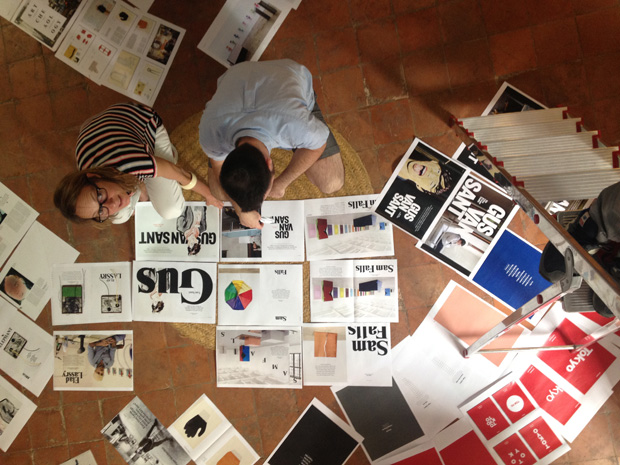
Back to Stavro, How did she and Martin first meet? "Eleven years ago at a dinner party held by a mutual friend, Patrick Thomas [the designer], in Barcelona. Pablo was cooking paella and I fell in love with that,” says Stavro. “I don’t particularily like paella, but that paella was something else,” she says with a laugh.
Does she think being a slightly larger than life character helps in what can sometimes be a rather ernest business of design? “I know what you mean,” smiles Stavro, “I have a strong character; I get pissed off, I scream a lot in the office, I guess it's my Italian blood. Pablo is the pacifier, Pablo is Buddha... It's a good contrast, I'm the anti-Buddha in a way and I guess that we balance each other perfectly, it’s a ying and yang thing.”
Astrid is exactly the sort of person I hoped would populate my industry but the reality is, she is a rare breed: Incredibly talented but also warm, generous and really good fun.
I wonder how the ‘ying and yang thing’ plays out. Stavro and Martin often worked with the same clients before their studios got together, surely there must of been times of commercial competition between the two lovers before they tied the knot?
Amanda Renshaw, former deputy publisher and editorial director of Phaidon Press can possibly shed some light; Renshaw, along with Alan Fletcher and Julia Hasting commissioned designers at Phaidon. After we've got over the ‘good grief how on earth do they manage to stay sane?’ part of the conversation on work and marriage, I ask Renshaw about commissioning the two and whether they were ever approached for the same brief. “It took me a while to realise they were together,” laughs Renshaw, “I remember Pablo as a great art director, he comes and just places a line in the margin and it looks great; the tiniest move can make all the difference. Astrid is somebody to go to with a problem, she makes you look at the editorial in a different light.”
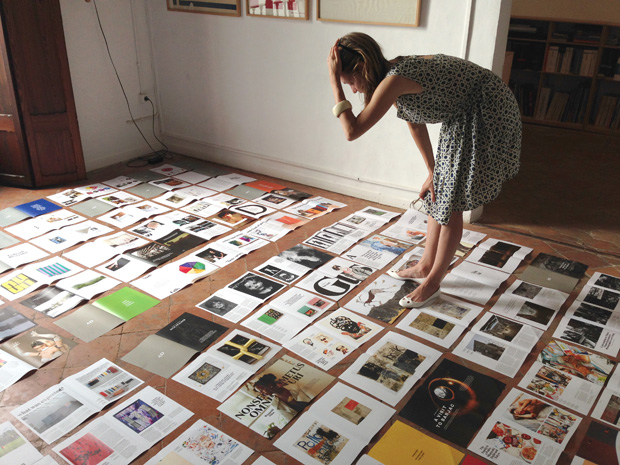
Renshaw left Phaidon in 2014, but Julia Hasting, creative director, continues to hold the torch for the pair. “Atlas are among my favourite designers to collaborate with,” says Hasting, “every design brief assigned to them is resolved with the most intelligent, outstanding, and beautifully executed concept.” Asked for particular strengths Hasting adds “Astrid’s great strength lies in fine typography and she combines it with strong concepts and great care for detail.”
Stavro's typography work had played a major part of my interview with her for Grafik in 2008. Creative Review brought out a major profile along similar lines. Editor Patrick Burgoyne, notes “When we did the piece on her in June 2009 we'd begun to think of her primarily for her typographic covers. We asked her if she'd like to design the cover and she confounded us with a fantastic, vernacular solution that used plastic signs made in a little shop in Barcelona. I think it revealed an aspect of her work that others may not have realised was there – it was really fun and engaging and idea-driven.”
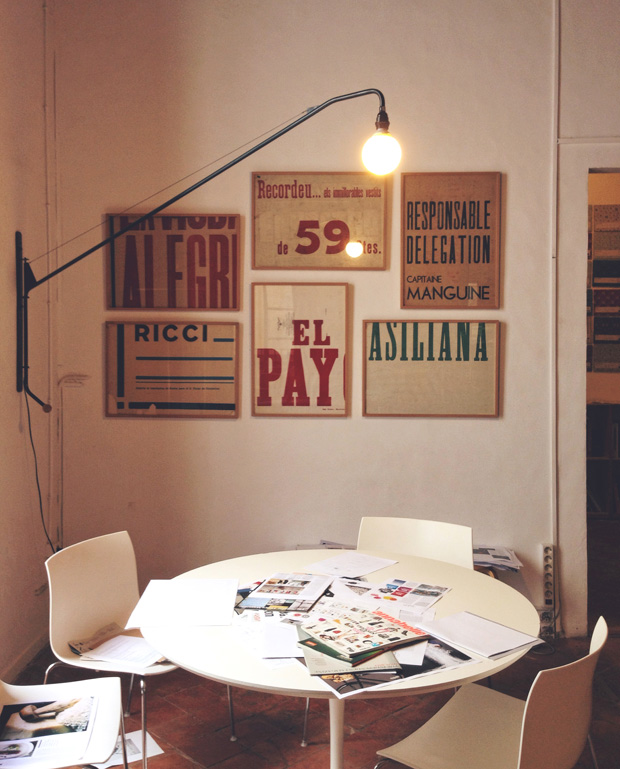
Robert Shore, editor at Elephant agrees, “She and Atlas have given a fantastic new energy to Elephant, the magazine is not piecemeal-designed: it’s a long, carefully constructed design sentence, not a series of short, separate statements. I really admire that.”
Stavro covers all bases when it comes to publishing; art direction to editorial, typography to journalism, but it’s writing that she professes was a first true creative love, and like all first loves, rather difficult to emotionally untangle oneself from. “Writing is a space of emptiness which I fill in with other people's input and then filter,” says Stavro, “Writing is like designing with words, for me they are very similar things.”
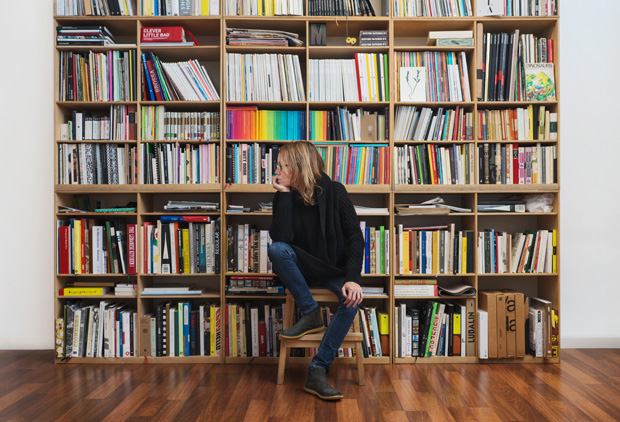
David Pearson of Type as Image was on the receiving end of this paramour, being interviewed by Stavro for the Spanish graphic design magazine Visual. “I remember it being the most in-depth interview I’d ever done and I remember feeling incredibly flattered that someone had gone to such lengths to enquire about my work.” says Pearson of the experience, “Astrid is exactly the sort of person I hoped would populate my industry but the reality is, she is a rare breed: Incredibly talented but also warm, generous and really good fun.”
As we move on to the French House to meet Pablo, I later recall the conversation with Marc Valli describing the Martin-Stavro double act as good cop bad cop; only this time it's about the kind of work the studio is dealing with. My interview with Stavro had revolved around the world of books and magazines; as we begin the walk down Old Compton Street, the conversation turns to Nigerian airlines, casinos and the suburbs of a far-flung city that has requested a makeover – all projects that the studio is also currently involved in. “Pablo will tell you about these,” says Stavro conspiratorially.
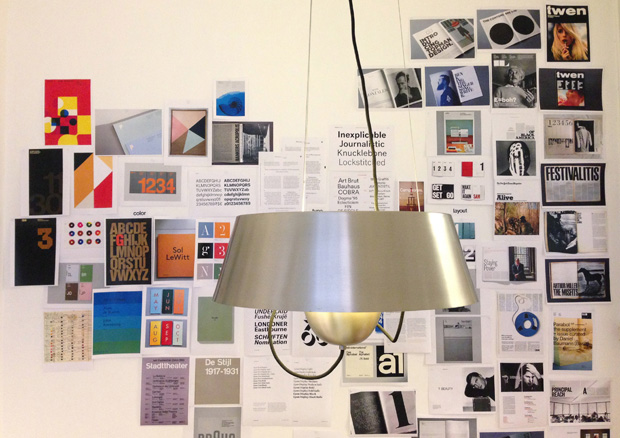
Both Stavro and Martin are cautious about revealing too much about their current projects for fear of breeching NDAs (non-disclosure agreements) and my interview is in danger of turning into parlour game as I whittle away fruitlessly. Sometimes I hit near the mark: I later find out that what I guess to be a book about footwear is in fact a book entitled The Walking Society, for shoe manufacturer Camper, published by Lars Müller Publishers, one that will be launched at the Vitra HQs in Basel on June 17th. I manage to narrow in on Casino de Ibiza, (a collaboration with architect and designer Patricia Urquiola) and the fabled identity for Nigerian airlines “project confirmed, it's just following an apparent, very relaxed 'Nigerian' rhythm,” according to Stavro.
Marc Valli had stated that these were some of the hardest working people he'd ever met – Stavro later sends me a list with no fewer than twenty-three current studio projects, alongside the casino and airline, sits the identity and naming for a luxury eco-hotel in Southern Portugal, a product catalogue for EO (a Danish furniture manufacturer) and the 'usual' work for Phaidon and Elephant Magazine.
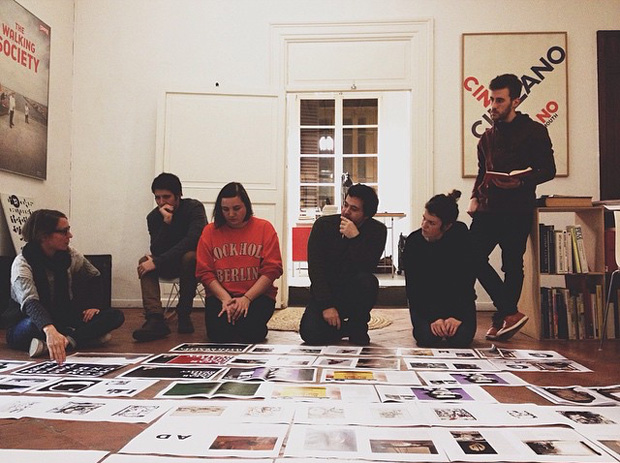
How does the studio function on a day-to-day basis? “There is a very well-used, or shall I say reappearing, word for most projects we’re working on: ‘witty'. Both Rafa and Astrid are very passionate about this word and hardly a day goes by without us hearing ‘is it witty’ or ‘it has to be witty’. But can you blame them? It is a good word and a great quality to have in design.”
Love, passion, humility and humour; there appears to be a winning combination of qualities in Stavro and Martin’s union. One of the great arts in life is surely that of making things that are incredibly hard look simple — the pair carries this off with style.
I am amazed by the scope of her design. It is not based on a single trick. For me, she personifies sensitivity in graphic design.
Stavro had asked me to get Joost Grootens' view of her work. I contact him and he responds with eloquence: “I am a fan. I see someone at work who is a virtuoso designer. Where I am much more of a worker, creating complex systems in my work, Astrid seems to lightly touch the object she designs. Every touch is perfect… I am amazed by the scope of her designs. I mean, it is not based on a single trick. It has a sensitivity for colour, for typography, composition and for materiality. For me, she personifies sensitivity in graphic design. I also like that she moved from being an individual designer to running a larger studio, it allows her to expand her portfolio and do something different”.
The Atlas portfolio expands at an increasing rate, and, back in Soho, Martin and Stavro slip into the fluidity of a life-long double act. We talk further of writing and Stavro confesses a hankering towards writing a novel. “She’s been saying this for years, of course she can do what ever she wants,” says Martin. “How about the Book of Tweets?” says Stavro, adding, “I’d rather talk about passion and great love stories than graphic design.” “It’s just graphic design,” agrees Martin. “Yes, it's just graphic design,” says Stavro.“That’s something that we both agree on.” Without missing a beat Martin shakes his head and laughs, “Ahhh, but sometimes we don’t…”.

